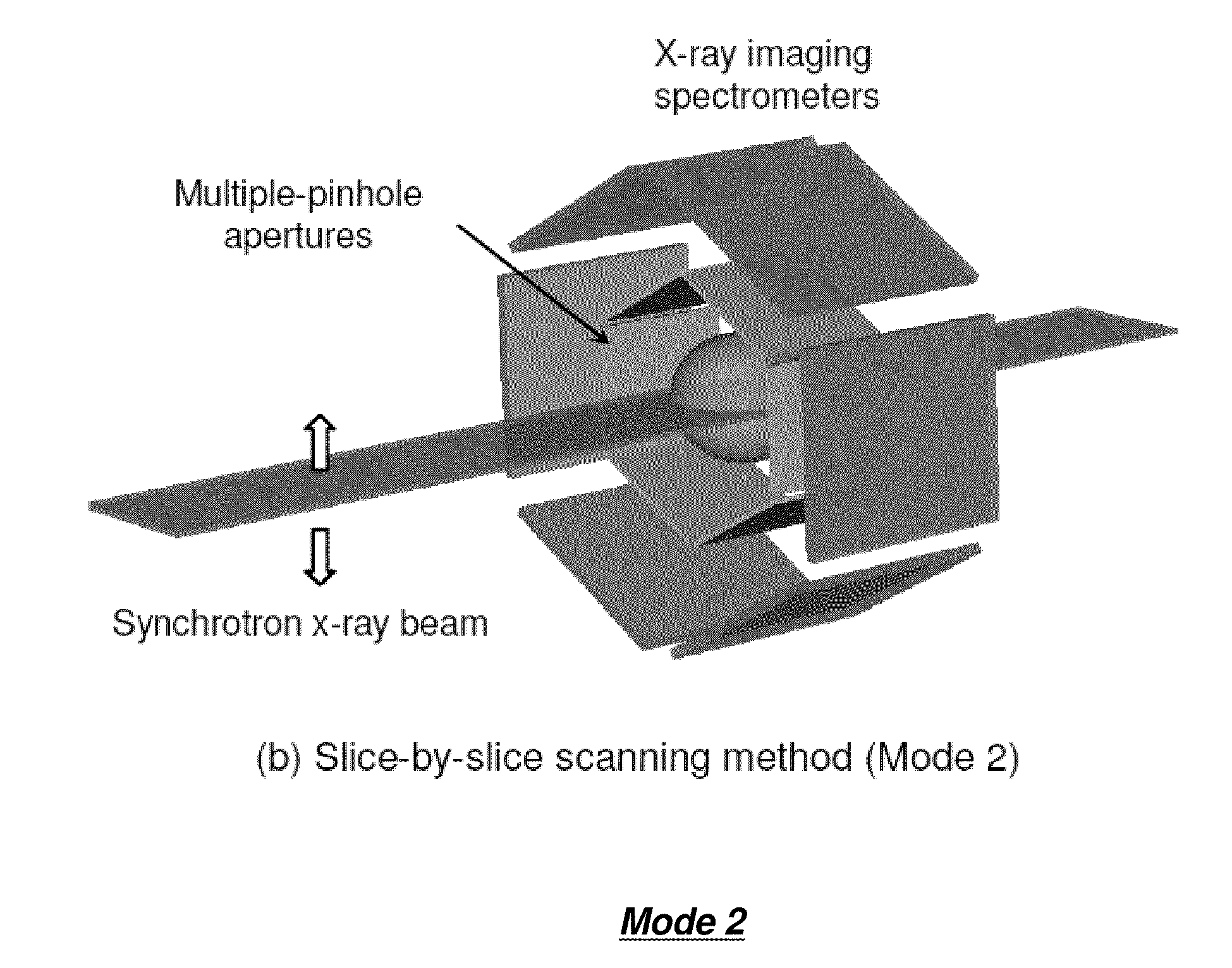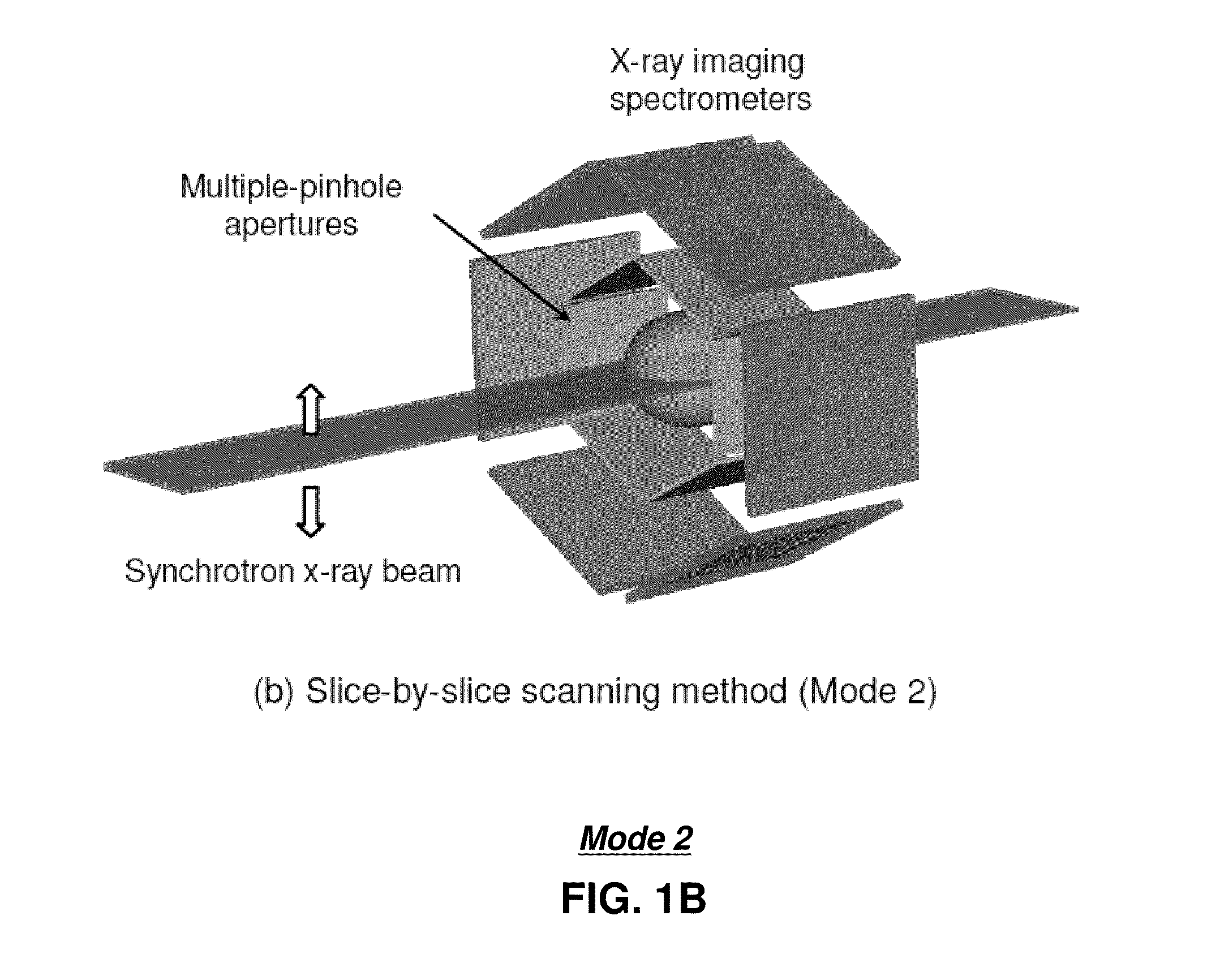Method and apparatus for measuring properties of a compound
a technology of compound and measuring device, applied in the direction of instruments, diaphragms/collimeters, diaphragms for radiation diagnostics, etc., can solve the problems of long imaging time, mechanical scanning, and reduced imaging tim
- Summary
- Abstract
- Description
- Claims
- Application Information
AI Technical Summary
Problems solved by technology
Method used
Image
Examples
Embodiment Construction
[0017]One embodiment of the present disclosure entails an apparatus having a collimator and a fluorescence detector. The collimator can be positioned next to a compound. The collimator can have at least one aperture. The aperture can be made of a thin sheet of heavy metal, such as gold and tungsten, with openings machined through the metal sheet. The compound emits fluorescence X-rays when impacted by an X-ray beam generated by an X-ray source. The collimator in turn can absorb at least a first portion of the fluorescence X-rays emitted by the compound and allow a second portion of the fluorescence X-rays to pass through the aperture to be detected by the fluorescence detector placed in proximity to the aperture. A three-dimensional (3-D) rendering of an elemental distribution of the compound can be determined from the fluorescence X-rays detected and the directional information.
[0018]One embodiment of the present disclosure entails a method for receiving fluorescence X-rays respons...
PUM
 Login to View More
Login to View More Abstract
Description
Claims
Application Information
 Login to View More
Login to View More - R&D
- Intellectual Property
- Life Sciences
- Materials
- Tech Scout
- Unparalleled Data Quality
- Higher Quality Content
- 60% Fewer Hallucinations
Browse by: Latest US Patents, China's latest patents, Technical Efficacy Thesaurus, Application Domain, Technology Topic, Popular Technical Reports.
© 2025 PatSnap. All rights reserved.Legal|Privacy policy|Modern Slavery Act Transparency Statement|Sitemap|About US| Contact US: help@patsnap.com



